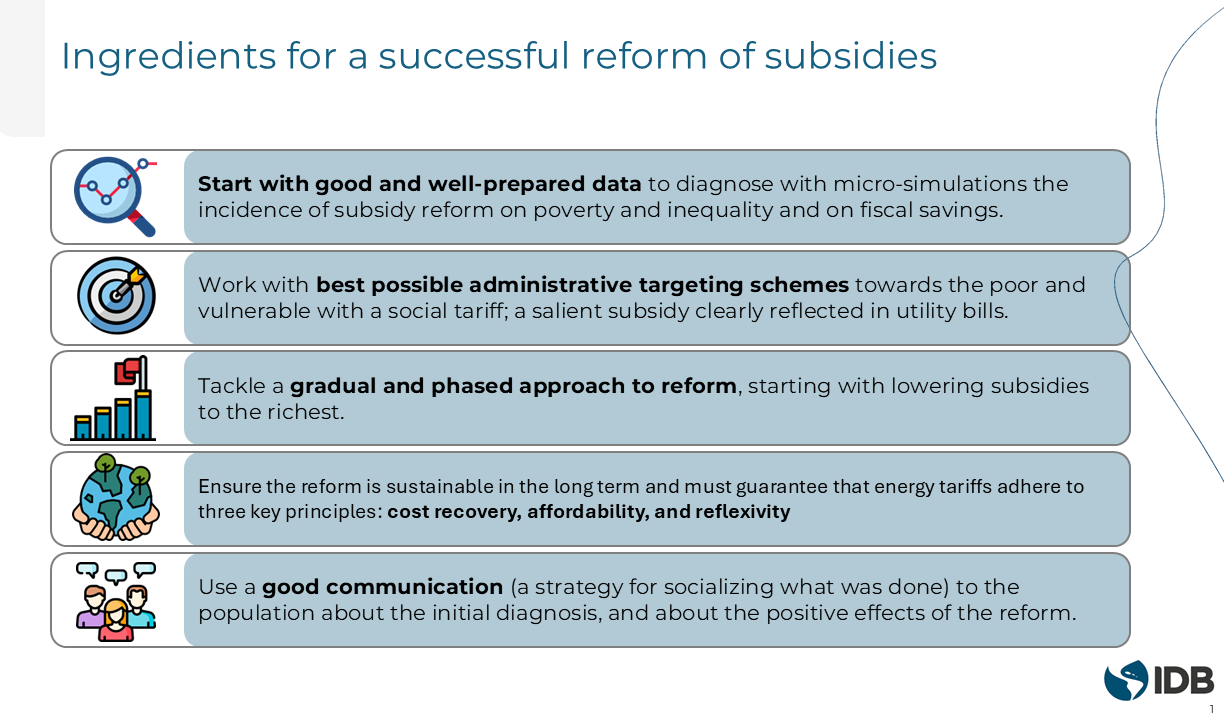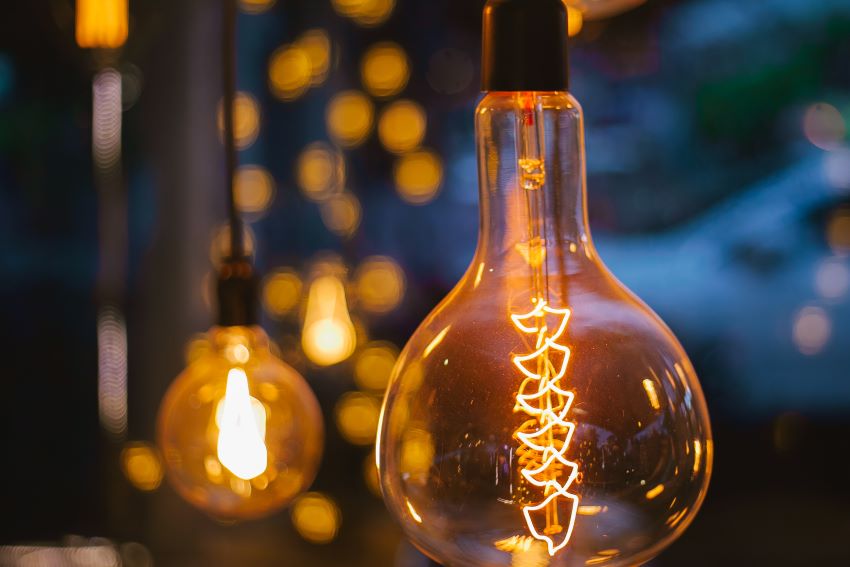Better information can help Latin America and the Caribbean tackle energy subsidies and make the energy sector stronger.
Many Latin American and Caribbean governments use energy subsidies as part of their anti-poverty efforts. As countries began tightening budgets and reducing debt post-pandemic, these subsidies have come under scrutiny. They are not only expensive but largely tend to benefit individuals who don’t need them while discouraging much-needed investments to modernize the energy sector.
Over the past five years, Latin American and Caribbean governments have spent an average of $43 billion annually on energy subsidies, with some countries spending almost 3% of their GDPs on subsidies, according to IDB internal calculations. Yet, estimates suggest that only one in five of those dollars reached households truly in need.
To help governments better target subsidies and support critical energy subsidy reforms, the IDB has developed the LAPEF fiscal lab, a methodology leveraging data from household surveys, public finance records, and other administrative sources to improve targeting and inform policy decisions.
Better focalization of energy subsidies could enhance governments’ ability to reduce market distortions, boost efficiency, and stimulate investment in a sector that is vital to national competitiveness and productivity.

Targeting Energy Subsidies with LAPEF
Since 2022 LAPEF has been studying energy subsidies in Brazil, Colombia and El Salvador to better understand who is benefitting from subsidies, and measure potential fiscal savings with improved targeting. The methodology was recently used to support a reform of energy subsidies in Argentina, part of a fiscal consolidation program agreed with the International Monetary Fund.
LAPEF helps governments better understand who needs subsidies by combining different sources of information, so they have a more holistic view of potential beneficiaries and better estimate their level of vulnerability. The methodology also helps governments to simulate different levels of subsidies and their potential impact on fiscal balances and poverty levels.
This type of information is crucial for cash-strapped countries seeking to ensure their spending cuts do not fall on the shoulders of those who can least afford them.
In the case of Argentina, LAPEF helped the government determine who out of its 22 million people receiving electricity subsidies were the neediest. It found that the country’s richest 30% of the population obtained 43% of the electricity subsidies. The poorest 30% of the population obtained 21% of the subsidies.
To determine who should continue to use the subsidies, authorities used a combination of inclusionary as well as exclusionary criteria to measure their level of vulnerability.
Receiving unemployment benefits or making less than the equivalent of two minimum wages are examples of inclusionary criteria. Owning a car that was less than ten years old or more than one property disqualified you from the subsidies. This lowered the number of richer beneficiaries, saving the government about 1 point of GDP.
Understanding Policy Trade-offs with Microsimulations
As part of its support for the country’s fiscal consolidation, the IDB collaborated with the government to develop a high-resolution tax and expenditure model. Using microsimulations, they assessed the optimal level of energy subsidies to ensure the reform would protect low-income households while enabling the government to achieve fiscal savings. In 2023 alone, Argentina spent $10 billion on energy subsidies.
Authorities were presented with several microsimulation scenarios, from total elimination of the subsidies – which would have the biggest deficit reduction but would also hurt the poor – to other alternatives that eliminated the subsidy for those who could afford to pay it while maintaining support for the poor and vulnerable.
The microsimulations were a key input that contributed to the reform. Pre-reform, wealthy households had 60% of their energy costs covered by subsidies; this dropped to just 7% after the reform.
The poorest households saw a much smaller decline in energy costs covered by subsidies, from 94% to 74%. Overall, the country saw a fiscal saving of more than 4% of GDP, and spending inefficiency fell from 7.2% to 3.5% of GDP from 2016 to 2024, of which almost half was due to the reform of energy subsidies.
Reducing Distortions
Besides improving fiscal balances, better targeting of subsidies can also be beneficial for the electricity sector.
Often introduced with the intention of protecting the most vulnerable, the subsidies tend to distort price signals, discourage energy efficiency, delay the adoption of new technologies, and reduce incentives for private investment. This ultimately ends up eroding the financial viability of the sector and lock countries in outdated energy systems. By ensuring that only the neediest get the subsidy, governments help reduce potential distortions they may generate.
And last, better targeting also helps governments mitigate the risk of popular backlash against cutting subsidies and advance reforms. A study in 11 countries carried out by the IDB revealed that most are unaware of the existence of energy subsidies and did not support their elimination. However, the survey showed that communicating the impacts of the subsidies increased public acceptance for reforms.
Further reforms may include applying lifeline tariffs, where governments provide a basic amount of energy at a subsidized rate to protect the most vulnerable population and charge higher rates for higher usage.
In summary, LAPEF empowers countries to make evidence-based decisions on equitable fiscal reforms, ensuring that scarce public resources are used more efficiently and directed toward those who need them most.
Pablo Bachelet, principal communications specialist at the IDB, also contributed to this post.
Subscribe to our newsletter to keep up to date with our latest publications, blogs and events. Make sure you select the newsletters option after choosing the topic of fiscal policy and management.


Leave a Reply